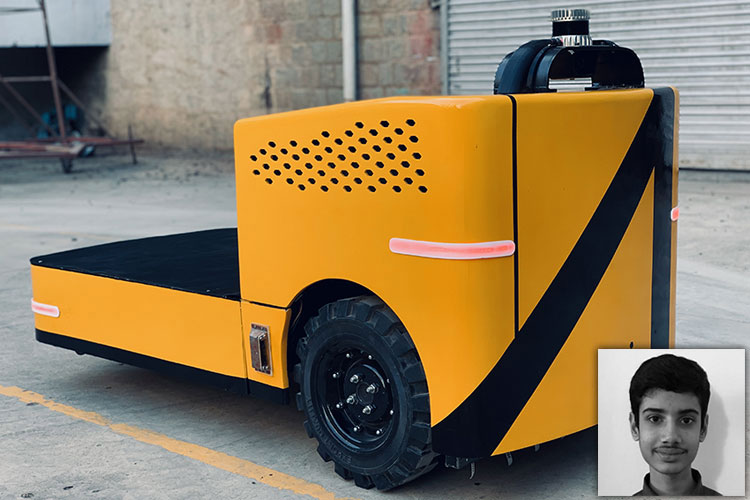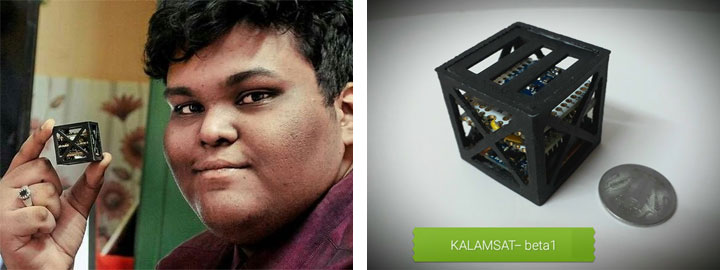INDIAN ARMED FORCES CHIEFS ON
OUR RELENTLESS AND FOCUSED PUBLISHING EFFORTS

SP Guide Publications puts forth a well compiled articulation of issues, pursuits and accomplishments of the Indian Army, over the years

I am confident that SP Guide Publications would continue to inform, inspire and influence.

My compliments to SP Guide Publications for informative and credible reportage on contemporary aerospace issues over the past six decades.
- Prime Minister witnesses 'Bharat Shakti' – a Tri-Services Firing and Manoeuvre Exercise in Pokhran, Rajasthan
- Interim Defence Budget 2024-25 — An Analysis
- Union Defence budget 2024
- Prime Minister Modi Commemorates Indian Navy Day in a Grand Ceremony
- Prime Minister Modi Flies in the LCA Tejas
- New Chapter in India-Italy Defence Ties
- Airpower beyond Boundaries
No Dearth of Young Talent
 |
The Author is Former Director General of Information Systems and A Special Forces Veteran, Indian Army |

Saad Nasser, a class five dropout from school in Bengaluru has developed a fully autonomous sub-ton carrying vehicle which is driverless and acts with precision. Saad is only 16 years old who dropped out of school to become an entrepreneur. He has won multiple national and international engineering competitions including the Intel Iris and the Broadcom Masters competition.
The ‘Sherpa 1000’ developed is an autonomous, electric, sub-ton carrier with a unique three wheel tadpole design for agility and maneuverability. It is designed with a dual carry or tug option. The complete vehicle is a ‘Made in India’ product barring a few sensors that are American. He has already founded a company ‘Ati Motors’ in Bengaluru in conjunction Dr V. Vinay and Sarabh Chandra. V. Vinay has been an academic and an entrepreneur who is a former professor of Computer Science at the Indian Institute of Science, co-invented the Simputer and was co-founder of Strand Life Sciences. Saurabh Chandra is an entrepreneur who has worked in multiple startups and founded an IT company that he ran for 11 years before exiting it after Publicis acquired it. Between the three of them they cover intimate expertise in business, research and technology. As a unique startup of India, Ati Motors has assembled an interdisciplinary team of around 30 engineers across Machine Learning / Artificial Intelligence (AI), Power, Electronics, Control Systems, Mechanical Engineering, System Software and Electronic Hardware. Apart from expertise of the in-house team, Ati Motors leverages the ecosystem in Bengaluru that already caters to the aerospace sector, automotives and electronic verticals.
With an applied research focus, the company is high on academic rigours and implementation. Sherpa 1000 is the only autonomous industrial vehicle in this class that delivers autonomously in both indoor and outdoor scenarios. This increases the operational space from factory floor to outdoor yards level autonomy, as also in-campus road network. This superior operational capability is achieved through complete ground up design that includes designing the physical vehicle, electric drive train and the autonomy stack together for optimisation across layer. The result is a purpose built stack which delivers superior performance while being highly energy efficient and cost competitive. The original algorithms help achieve robust autonomy in various lighting conditions including complete darkness, floor quality including chipped, rough or oily, and gradient. There are no infrastructure aids required and even lane markers are optional. While Sherpa 1000 makes autonomy accessible to many Indian facilities that could not deploy such solutions, it also delivers superior results in modern environments. It is excellent for transporting logistics loads and cargo handling.

There is no dearth of young talent in India as demonstrated earlier, like: 18-year-old Rifath Sharook from Karur in Tamil Nadu, scripted history in June 2016 after NASA sent a 3D-printed satellite he helped build into space – world’s smallest satellite; Class X student Akash Manoj from Tamil Nadu developed a skin patch that can detect 'silent heart attacks' if it is attached to the ear or the wrist; three Class XII students of Mumbai’s Cathedral and John Connon School built and set up a 3D printed sanitary napkin dispenser for their school; Class XI student Anang Tadar from Arunachal Pradesh developed a pair of glasses to help the visually-impaired navigate hands-free; 15-year old Saiyam Agarwal invented a mobile-controlled robot and LED lights that change according to music beats and a torch for visually impaired that beeps when a hurdle is nearby; 12-year-old Kavya Vignesh from Delhi developed a bee saver bot to save bees from going extinct; in March 2016, 15 girl students from Indira Gandhi Delhi Technical University for Women won the Perseverance and Spirit of the Event Award for Iris 2.0 – a three-wheeled vehicle with a mileage of 300 km/h. 13-year old Shubham Banerjee created a working Braille printer dubbed the Braigo V1.0 which is cheaper than other Braille printers in the market; 14-year old Remya Jose invented the washing-cum-exercise machine using recycled bicycle part that won her a National Award; Class 7 student Aryan Tanwar invented the ‘smart school bag that indicates whether or not your school time-table requires you to carry a particular book that day; Class 12 students Shreyas Kishore and Pranshu Malik of DPS R.K. Puram created TRACEY - Traffic and Emission Control System; 16-year old Shaurya Jain invented Portable Atmospheric Water Generator; Class 10 student Hemkesh Agarwal invented Automatic Home Surveillance Bot; Class 6 student Tarna Joy from Tripura invented an umbrella for more than five people, Class 7 student Pradyumna Kumar from Orissa and Class 9 student Rahul Kumar from Bihar independently invented a system that alerts the bus driver to know which passenger has put his hand or head outside the bus window; Class 8 student Simran Chadha invented reversible bench so that if you find them wet or dirty, you can just rotate a handle to allow the other side to come up; Class 8 student Subash Chandra Bose from Tami Nadu invented a solar seeder drill which can plant different sizes of seeds at variable depth while maintaining varying space between two seeds; Class 10 student Hadasha Ruangmi from Nagaland has invented Spectacle Microscope that can be worn like spectacles instead of bending over a microscope every time, and; Class 11 student Ram Akash from Tami Nadu and Class 12 student Nimisha Katyayan from Jharkhand independently invented Drawbridge Door for Trains that acts like a ramp making it easy for people to carry their luggage inside the train bogie. The list is endless.
India is the world's youngest country with over 60 per cent of the population under the age of 35. Above are just few examples of our young brains. Coupled with IITs and host of startups India has the potential of being a great power house given the right focus and direction. Today India is the third-large startup ecosystem in the world. We have over 9,000 operating in technology alone with as many as 1900 added in 2019. We have 30 Unicorn Indian startups valued at over US$ 1 billion and there is good chance of these numbers growing. The question remains can we integrate this huge talent and channelise it to become ‘Atmanirbhar Bharat’ and a thriving industrial hub of the world?





